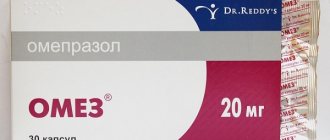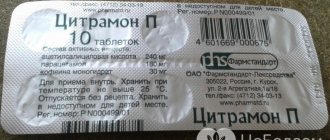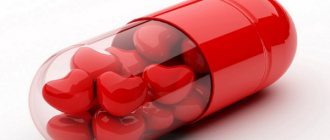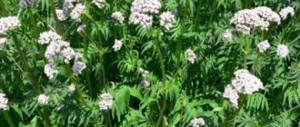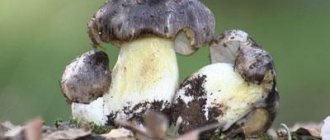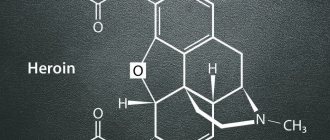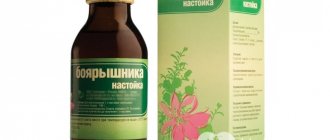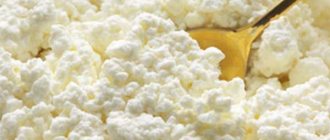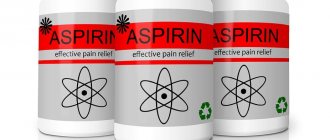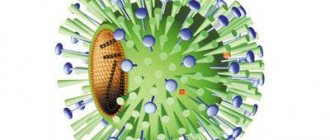No-spa is a popular antispasmodic drug whose active ingredient is drotaverine. Almost always, the remedy is used for functional gastrointestinal disorders accompanied by spasms.
An overdose of this drug can lead to the formation of symptoms of poisoning, as well as a number of other pathologies and complications. In this article you will learn how many Noshpa tablets you can take per day at a time, what dose is considered fatal, and what are the symptoms of a drug overdose.
What kind of drug is noshpa
No-Spa is a medicine that belongs to the group of antispasmodics. The main active ingredient is Drotaverine. When used, it relieves spasmodic manifestations of smooth muscles in the genitourinary and digestive systems. The medicine is used for various diseases. Indications for use of No-Shpa are:
- pain in the digestive organs in the presence of gastritis, pancreatitis, ulcerative lesions;
- colic in the presence of stones in the kidneys and gall bladder;
- presence of pain during menstruation;
- increased tone of the uterine muscles when there is a threat of miscarriage.
No-Shpu can be used for irritable bowel syndrome, increased flatulence and other diseases accompanied by spasmodic manifestations.
Like the article: “ But Shpa in case of food or alcohol poisoning - is it possible? ".
When used, the active substance spreads throughout the tissues, leading to vasodilation and improved blood circulation. The dosage of the drug depends on the age of the patient.
How to drink noshpa correctly:
- At the age of six to twelve years, the amount of the drug for a single dose is 40 mg, taken no more than twice a day.
- Adolescents from twelve to sixteen years old are allowed to consume up to 60 mg at a time; the amount of No-Shpa per day should not exceed 160 mg, it must be divided into 3-4 times.
- For people over the age of seventeen years, the dosage is up to 240 mg of the drug per day. The total number of tablets is divided into several doses.
When using No-Shpa, it is recommended to monitor your general condition. It is not recommended to increase the permitted amount of medication on your own. The lethal dose for No-Spa poisoning varies depending on the age and condition of the patient.
A little history of the drug
Back in the middle of the twentieth century, attempts were made in Hungary to improve such an antispasmodic drug as Papaverine. This is how a new medicine appeared - Drotaverine, which in 1962 received the official name No-Shpa. "No Spasm!" - it sounds in Latin and means “No spasm.” This name characterizes with absolute clarity the main effect of the drug on the human body. In addition to its ability to relieve spasms, No-Spa is able to relax the smooth muscles of blood channels, dilate blood vessels, and lower blood pressure.
In the territory of the former Soviet Union, this remedy appeared in the 70s. Now it can be purchased in more than 50 countries around the world. No-Shpa gained such popularity due to its advantages:
- relative safety,
- effectiveness of action,
- affordable price.
Although most of us are familiar with No-Shpa as small yellow tablets, it is currently available in different forms:
- in tablets,
- in coated tablets,
- in capsules,
- in liquid for injection.
How can you get poisoned by a load?
When used correctly, the drug helps cope with unpleasant symptoms. However, the medicine is not as safe as it seems. Poisoning caused by No-Shpa is possible for several reasons:
- exceeding the prescribed dosage;
- taking No-Shpa in patients with AV block (impaired heart function associated with incomplete contraction of structures);
- kidney and liver failure;
- suicide.
In children, poisoning often occurs due to the carelessness of adults who leave the medicine in accessible places. The risk of No-Spa intoxication is increased in older people who forget how many tablets they took. Self-use of the medicine also often causes poisoning. A person, wanting to get an instant result, immediately takes an increased dosage.
Intoxication has a code according to ICD-10 - T36-T50 - Drug poisoning.
Lethal dose
No-spa is quickly, completely and effectively absorbed both through the gastrointestinal tract and when administered intravenously, which significantly increases the chances of death when using extremely high doses of the drug.
As modern clinical practice shows, a potentially lethal dose of no-shpa for a person is on average 1.5-2.5 grams of pure drotaverine (in its 100% concentration), which is equivalent to 40-60 tablets of no-shpa.
As this extreme threshold is exceeded, the risk of death increases exponentially, but the final outcome depends on the individual characteristics of the body, the presence or absence of pathologies of the cardiovascular system and other factors.
Contraindications for use
No-Shpa is a medicine, therefore it has contraindications. There are some pathological conditions in which the use of the medicine is not allowed. Do not accept:
- Impaired kidney or liver function. If the tablets disintegrate poorly and are not excreted by the body, then the drug accumulates.
- Children under six years of age.
- Low cardiac output syndrome.
- Breastfeeding period.
- Intolerance to the components of the drug.
- Increased sensitivity.
Caution must be observed when using No-Shpa during pregnancy and in people with low blood pressure. Before taking the pills, exclude the presence of contraindications in order to avoid negative consequences.
Consequences of drug interactions
"No-spa" when combined with levodopa reduces the antiparkinsonian effect of the latter substance. Tremors and rigidity may increase in people taking these medications.
When No-shpa is combined with other antispasmodics, a mutual enhancement of the analgesic effect is observed. The antispasmodic effect is also enhanced when drotaverine hydrochloride interacts with m-anticholinergic blockers.
Other consequences of drug interactions indicated in the attached instructions for Noshpa tablets:
- decreased spasmogenic activity of morphine while taking drotaverine and morphine;
- enhancing the analgesic effect of drotaverine when combined with phenobarbital.
In conclusion, it is worth noting that each of us faces some kind of pain every day. “No-shpa” or “No-shpa forte” can get rid of them, but you cannot abuse the pills and not follow the instructions. If unpleasant sensations are tormented very often, there is no need to try to drown them out with medications. The correct action in such cases is to consult a doctor and undergo an examination to find out the causes of the pain syndrome.
First aid for overdose
An overdose of No-Spa appears after half an hour.
The severity of poisoning depends on the amount of medication consumed, the patient’s condition and concomitant diseases. In case of intoxication, the presence of the following symptoms is noted:
- intense pain in the head, dizziness;
- disturbance of consciousness;
- decrease in pressure;
- apathy, weakness;
- violation of the respiratory process, lack of oxygen;
- feeling of a sinking heart;
- rhythm disturbance;
- exercise intolerance.
In severe forms of poisoning, there is a serious disruption of the cardiac and respiratory systems. Cardiac arrest and paralysis of the respiratory center cannot be ruled out. In the absence of necessary treatment, death is possible.
If symptoms of poisoning caused by No-Shpa are detected, a medical team is called. At home, the victim is given first aid.
Actions in case of intoxication:
- Carry out gastric lavage with plenty of water.
- After cleansing, the victim is given activated charcoal - 2 tablets per 10 kg of body weight, it is acceptable to use Polysorb, Enterosgel.
- The patient is given plenty of fluids to drink to reduce the effects of the toxin.
- If a person is unconscious, they are placed on a horizontal surface, restrictive clothing is unbuttoned, and resuscitation actions are carried out.
- They provide a person with peace.
Timely first aid will help avoid serious complications. After carrying out the described actions, the victim is sent to a medical facility for further treatment.
Poisoning by No-shpa
Everyone has ever come across the drug No-shpa. Most of us have had to take it at least once. This medicine can be purchased by anyone in the pharmacy chain without a prescription.
Is No-shpa really harmless? Is it possible to be poisoned by No-shpa and what symptoms will be observed? How to treat such poisoning and should negative consequences be expected? Answers to such questions can be found in this article. We’ll also talk about how to provide first aid to a victim without special training.
About the drug "no-shpa"
No-shpa is one of the commercial names of Drotaverine.
The drug has a relaxing effect on the smooth muscles of the digestive system, biliary tract, genitourinary organs, and has a slight effect on the muscular wall of blood vessels and myocardium when taken in tablets.
Intramuscular or intravenous administration has a more pronounced effect on the cardiovascular system and can cause a decrease in blood pressure and a slower heart rate.
No-shpu is used for diseases accompanied by spastic pain in the gastrointestinal tract:
- gastritis;
- peptic ulcer of the stomach and duodenum;
- enteritis;
- colitis;
- irritable bowel syndrome;
- flatulence;
- pancreatitis.
No-spa relieves hepatic and renal colic that occur with cholelithiasis and urolithiasis, respectively. No-shpa is used in case of painful menstruation, in order to reduce the tone of the uterus in case of threat of miscarriage.
In what cases does no-spa poisoning occur?
No-shpa poisoning can occur in the following cases.
- If the maximum therapeutic dose of the drug is exceeded, an overdose may occur.
- Exceeding the age-appropriate dose in children.
- Taking the medicine by patients with AV block can cause No-shpa poisoning with a fatal outcome.
- For people with severe renal and liver failure, taking even the usual dose is unsafe. This is because the breakdown of the drug occurs in the liver, and most of the drug is excreted by the kidneys. Intoxication occurs due to disruption of the breakdown and (or) elimination of the substance. It accumulates in the blood and causes poisoning.
- Suicidal poisoning.
Clinical manifestations of poisoning
In case of No-shpa poisoning, symptoms may appear as early as 30 minutes after taking the tablets. In the future they increase. The severity of the condition depends on the dose of medication taken, the presence of heart, liver, kidney diseases, and the time of seeking help.
One of the dangerous symptoms will be rhythm and conduction disturbances. It is possible that tachycardia may develop due to a decrease in blood pressure and interruptions in heart function.
In people with severe vascular atherosclerosis, a drop in blood pressure during an overdose can provoke myocardial infarction and cerebrovascular accident.
Due to low blood pressure, the victim may experience tachycardia.
Poisoning with the drug can cause conduction disorders, which manifests itself:
- dizziness;
- general weakness;
- darkening of the eyes;
- fainting states;
- feeling of lack of air;
- a feeling of sinking heart;
- slow heart rate;
- poor tolerance to physical activity.
In severe cases of poisoning with No-shpa, a clinical picture of cardiac arrest develops with complete blockage of the nerve impulse in the heart, and due to paralysis of the respiratory center, respiratory arrest follows.
First aid for No-shpa poisoning
- Prevent absorption of the medicine: make several attempts to induce vomiting. Regardless of whether this worked out or not, give activated carbon a third of the daily dose (2 tablets of 500 mg per 1 kg of weight).
- Call an ambulance or take the victim to the nearest hospital.
- While the ambulance team is driving, try to drink as much liquid as possible (ideally 2 liters) and try to induce vomiting.
- If the patient is unconscious, they are laid on the floor or other flat, hard surface, their clothes are unbuttoned so that they do not restrict breathing, and their head is turned to the side.
Then you need to call an ambulance and, if necessary, perform an indirect cardiac massage and perform artificial respiration.
In case of No-shpa poisoning, first aid is provided on the spot and on the way to the hospital.
Treatment
In the hospital, gastric lavage is repeated, sorbents are prescribed for up to 3 days, since No-spa is completely eliminated from the body only in 72 hours. This is due, among other things, to the fact that 30% of the taken medicine enters the intestines with bile. To avoid reabsorption, enterosorption is continued for 3 days. A cleansing enema is also performed and laxatives are prescribed.
In case of poisoning with No-shpa, further treatment is reduced to washing out the drug from the blood. Preference is given to sorption methods - hemosorption, plasma sorption, lymphosorption. Their use increases the rate of elimination of No-shpa from the body several times. In the absence of contraindications, forced diuresis may be prescribed.
There is no specific antidote for an overdose of No-shpa. To avoid dehydration, intravenous drip administration of solutions is prescribed.
In case of breathing problems, the patient is connected to a ventilator. If cardiac arrest occurs, electrical stimulation is performed, adrenaline, Atropine, Isuprel are administered. Depending on the further course of the disease, symptomatic therapy is prescribed.
Consequences of poisoning
No-shpa poisoning can have serious consequences. The drug can provoke the development of renal and liver failure. Patients with vascular atherosclerosis may develop cardiovascular complications. The most tragic consequence is death due to respiratory arrest and the development of asystole.
As you can see, even such a seemingly harmless drug can cause severe poisoning. Therefore, it is necessary to take No-shpu and other analogues of Drotaverine only as prescribed by a doctor, and avoid uncontrolled use of the medicine.
Symptoms of poisoning are nonspecific. Cardiac disorders and general malaise come to the fore, with which patients consult a doctor, not suspecting that these are signs of poisoning.
Difficulties in timely diagnosis make poisoning more dangerous and the consequences more severe.
Treatment methods for foot poisoning
After the patient is admitted to the hospital, a thorough diagnosis is carried out. Later, treatment is prescribed, including specific procedures and the necessary medications.
Therapy:
- Gastric lavage using a tube.
- Sorbents are prescribed and medications are taken for three days to ensure complete removal of the toxin from the body.
- Use of cleansing enemas.
- Carrying out hemosorption, plasmasorption.
- The use of diuresis, hemodialysis.
- If the respiratory process is impaired, connect to a ventilator.
In case of cardiac dysfunction, adrenaline, atropine and isuprel are administered. In the future, vitamin complexes are prescribed and proper nutrition is selected. The duration of treatment depends on the degree of damage to the body due to poisoning.
Consequences and complications
An overdose of noshpa can cause the most serious consequences and complications for the victim, both almost immediate and long-term. Possible pathologies:
- Kidney failure . The overwhelming majority of the drug's metabolites are excreted by the kidneys - if the concentration of the active substance is too high, it can have a systemic negative effect on the organ;
- Systemic allergic reactions . In large dosages, no-spa causes systemic allergies, which often develop into long-term autoimmune processes;
- Cardiovascular pathologies . An overdose almost always disrupts the functioning of the heart, which leads to arterial hypotension, disturbances in cardiac rhythm and conduction, blockade of the His bundle and a complete stop of cardiac activity, which, in the absence of immediate qualified resuscitation care, quickly turns into the death of the patient;
- Bronchopulmonary pathologies . Mostly respiratory arrest is due to blockade of the corresponding center in the brain.
- Exacerbation of strange and emergence of new chronic diseases , most often of the urinary system and liver;
- Secondary bacterial infections against the background of generalized malfunctions of the body in general and the immune system in particular;
- Other syndromes, pathologies, diseases , indirectly or directly resulting from an overdose of no-shpa and complex intoxication with the drug’s compounds.
Consequences of an overdose of noshpa
An overdose provoked by No-Spa leads to unpleasant consequences. Even with proper treatment, complications may develop in the future. What might appear? Complications:
- impairment of kidney and liver function;
- development of pathologies in the functioning of the heart and blood vessels;
- the appearance of allergic reactions;
- death.
No-Shpa is not a completely harmless drug. If used incorrectly, the medicine provokes the development of poisoning. This can be prevented by following preventive measures:
- follow your doctor's instructions when taking the drug;
- do not leave tablets in places accessible to children;
- do not self-medicate.
Noshpa poisoning leads to disruption of the functioning of internal organs. If you follow the doctor's instructions, unpleasant consequences can be avoided. If signs of intoxication are detected, you must immediately contact medical specialists and provide first aid to the victim.
Indications for use
This is one of the few drugs that should be in your home medicine cabinet. When used rationally, the product helps relieve pain and spasms and reduce discomfort in the gastrointestinal tract. When discussing the harm and benefit No-shpa brings, it should be remembered that it does not disrupt the functioning of the nervous system. Indications for use are the following diseases:
- exacerbation of a stomach or intestinal ulcer,
- colitis,
- enteritis,
- gastritis of any acidity,
- inflammation of the pancreas,
- irritable bowel syndrome,
- cholecystitis,
- spasms of cerebral vessels due to circulatory disorders,
- renal colic.
Women are recommended to take No-shpa to reduce pain during menstruation. The ability to relieve smooth muscle spasms is indispensable for uterine hypertonicity during pregnancy, which threatens miscarriage.
Side effects from No-shpa appear if patients ignore contraindications for use: allergy to any of the components of the antispasmodic, arrhythmia, low cardiac output syndrome. Violations can result in deterioration of health:
- skin rashes,
- cardiopalmus,
- feeling of heat inside.
In this case, one should expect harm from No-shpa and no effect after a course of treatment. It is better to replace the drug with an analogue with another active ingredient that will be safe for humans. The use of the product in children under 6 years of age is not recommended.
Video: what you didn’t know about yet - noshpa
Read further:
Donormil overdose
